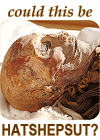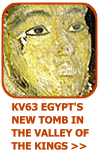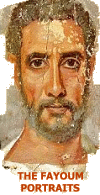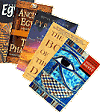|
|
|

Topics in this section: work and trade | leisure activities | hunting and fishing | food and drink | health and wellbeing | dress
Ancient Egyptian medicine was a mixture of magical and religious spells, with diagnosis and remedies usually based upon a keen observation of the patient.
As many illness and conditions were regarded as the result of either malevolent influences or erroneous behaviour, the most common procedure for dealing with many problems was initially an amulet or magical spell. Once the practitioner had dispersed or neutralised any malignant influences or evil spirits, he could then usually begin to treat the patient medically, if required.
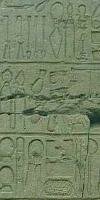 |
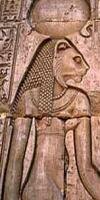 |
As early as the 3rd Dynasty, there were already individuals corresponding roughly to the modern concept of a doctor. There were also surgeons who were known as the "Priests of Sekhmet", as well as the ancient equivalent of dental and veterinary practitioners.
The somewhat destructive and powerful lion headed goddess of war, Sekhmet was also considered to be the supreme deity of healing. The Priests of Sekhmet were the specialists of the day in medicine and surgery. A number of medical papyri survive today and these have provided us with a wealth of information concerning the Egyptians knowledge of medicine, anatomy and physiology.
|
|
SURGICAL INSTRUMENTS
|
GODDESS SEKHMET |
The Ebers medical papyrus ...
| Originally over twenty metres long, the Ebers Papyrus consisted of a list of some 876 prescriptions and remedies for ailments such as wounds, stomach complaints, gynaecological problems and skin irritations. Prescriptions were made up in proportions according to fractions which were based on parts of the eye of Horus, ranging from 1/64 to 1/2. |
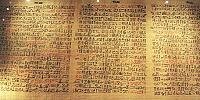 |
The Ebers Papyrus is primarily an internal medical reference, although anatomical and physiological references are also included. 877 recipes and 400 different drugs were described, although for some unknown reason the scribe who wrote it did not finish the papyrus, and ended in mid sentence.
The Edwin Smith medical papyrus c.1600 BC ...
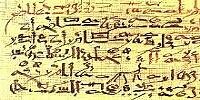 |
Thought to be the work of a doctor associated with a pyramid building workforce, this five metre papyrus deals mainly with problems such as broken bones, dislocations and crushings. Each of the 48 cases documented are divided into categories: "an ailment which I will treat", "an ailment with which I will contend" and "an ailment not to be treated".
|
The symptoms of each of the documented cases are described in the papyrus, and where possible a remedy or cure is prescribed. The doctor writing the papyrus was aware of the circulation of blood throughout the body and clearly recognised that the condition of the heart could be judged by the patient's pulse. This papyrus includes a vast experience in fractures that can only be acquired at a site where accidents were extremely numerous, for instance, as during the building of the pyramids.
The Kahun medical papyrus c.1900 BC ...
| The oldest yet discovered, and dating from the reign of Amenemhat III, the Kahun Medical Papyrus describes methods of diagnosing pregnancy and the sex of the unborn, toothache during pregnancy, diseases and various ailments of women, and is particularly concerned with the womb and determination of fertility. |
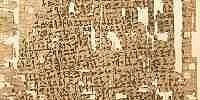 |
Methods of contraception are also given, such as the rather unpleasant consumption of "excrement of crocodile mixed with sour milk", together with remedies for urinary problems, problems in the abdomen and kidneys, and aching limbs with pain in the sockets of the eyes.
Other medical papyri ...
| The Berlin Papyrus: |
This contains the earliest known pregnancy test of "barley and emmer". " ... The woman must moisten it with urine every day ... if both grow, she will give birth. If the barley grows it means a male child. If the emmer grows it will mean a female child. If neither grows, she will not give birth."
|
| The Brooklyn Papyrus: |
Deals at great length with snakebites.
|
| The Chester Beatty VI Papyrus: |
Concerned only with the diseases and ailments of the anus!
|
| The London Papyrus: |
One of the best examples of the Egyptian approach to healing, consisting of a combination of magical spells, rituals and practical prescriptions, all of which would have been considered equally essential to the recovery of the patient.
|
 Related pages: see also "Articles: medicine and healthcare in Ancient Egypt" Related pages: see also "Articles: medicine and healthcare in Ancient Egypt"
Discover Ancient Egyptian style and fashion >>
|
|
|





